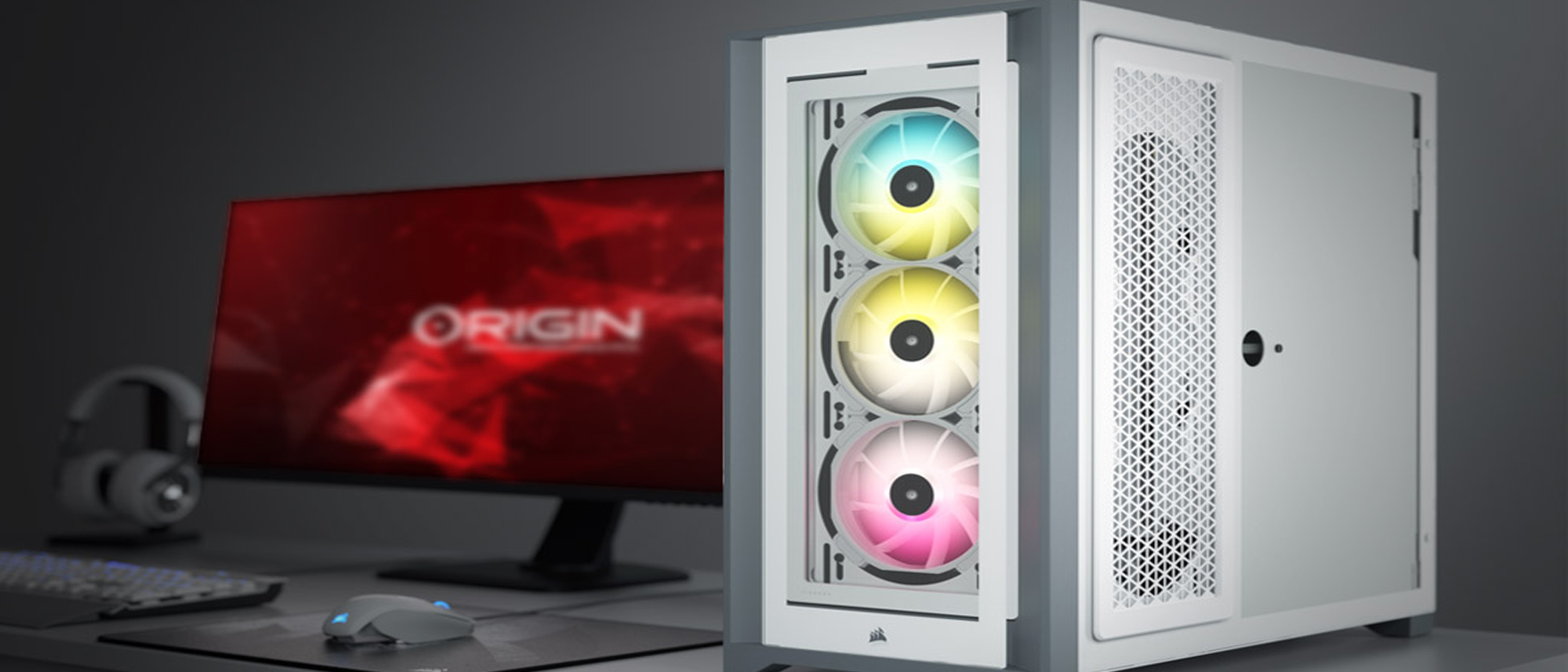Tom's Guide Verdict
The Origin PC Millennium is a beautiful system with excellent hardware and solid build quality. It can get pretty pricey, but you ultimately get what you pay for.
Pros
- +
Powerful hardware options
- +
Excellent performance
- +
Superb build quality
- +
Super-quiet cooling
Cons
- -
Expensive
- -
All accessories are optional
Why you can trust Tom's Guide
Processor: Up to Intel i9-10900K, 3.7Ghz-5.3Ghz; AMD Ryzen 9 5950X, 3.4Ghz-4.9Ghz
RAM: Up to 64GB
Graphics card: Up to RTX 3090; Radeon RX 6800 XT
Storage: Up to 4TB NVMe; 8TB SSD; 16TB HDD
Power supply: Up to 1600W
Case: Corsair 5000D, Corsair 5000X
Optional: PCIe sound card, Corsair K55, Corsair K60, Corsair K100
Origin PC is pretty well-known in the pre-built gaming PC market, often as a company that values quality in the products it sells. That’s not necessarily universal in everything that Origin puts out, but the Origin Millennium that I received is certainly spectacular.
This is a PC with beauty and brawn to match. As you might expect from a company like Origin, you have a slew of configuration options from which to choose. The price quickly climbs, though, and Origin charges a premium for its building services. Still, if you’re willing to pay top dollar for your hardware, the Millennium is an excellent choice. It’s also a surefire way to get a fancy new graphics card, which remain notoriously difficult to acquire, even this late into 2021.
In this Origin PC Millennium review, I’ll walk you through what it’s like to use this beautiful machine. Even in its base configurations, this device is a veritable dream come true for many PC gamers.
Origin PC Millennium review: Price and availability
Nailing down every single possible price and configuration for the Millennium is outside the scope of this review. For the CPU, you can opt for Intel (up to an i9-10900K) or AMD (up to Ryzen 9 5950X). You can also choose a GPU from either Nvidia (up to an RTX 3090) or AMD (up to Radeon RX 6800 XT). Origin offers mostly Corsair parts, with some other options for the NVMe and SATA drives. I encourage you to play with Origin’s configurator to find a combination that suits your needs and budget.
The unit I received as configured runs $5,216. It comes with an AMD Ryzen 9 5900X CPU, an Asus Crosshair VIII Hero motherboard, an Nvidia RTX 3080 Ti GPU, 32GB of white Corsair Dominator Platinum RAM, a 1TB Corsair MP600 Gen4 NVMe boot drive, a 2TB Seagate Barracuda storage drive, a Corsair iCUE H150i all-in-one CPU cooler, ten Corsair QL120 white RGB fans and a Corsair RMX 850W power supply. All of this came packed in a white Corsair 5000X Airflow case with white cabling.
Origin PC Millennium review: Design
When you build your Millennium, you get to choose from a Corsair 5000D or 5000X mid-tower case in either black or white. I received a white 5000X with the Origin logo etched into the tempered glass side panel. This case measures 20.5 x 20.5 x 9.6 inches and weighs nearly 30.5 pounds all on its own.
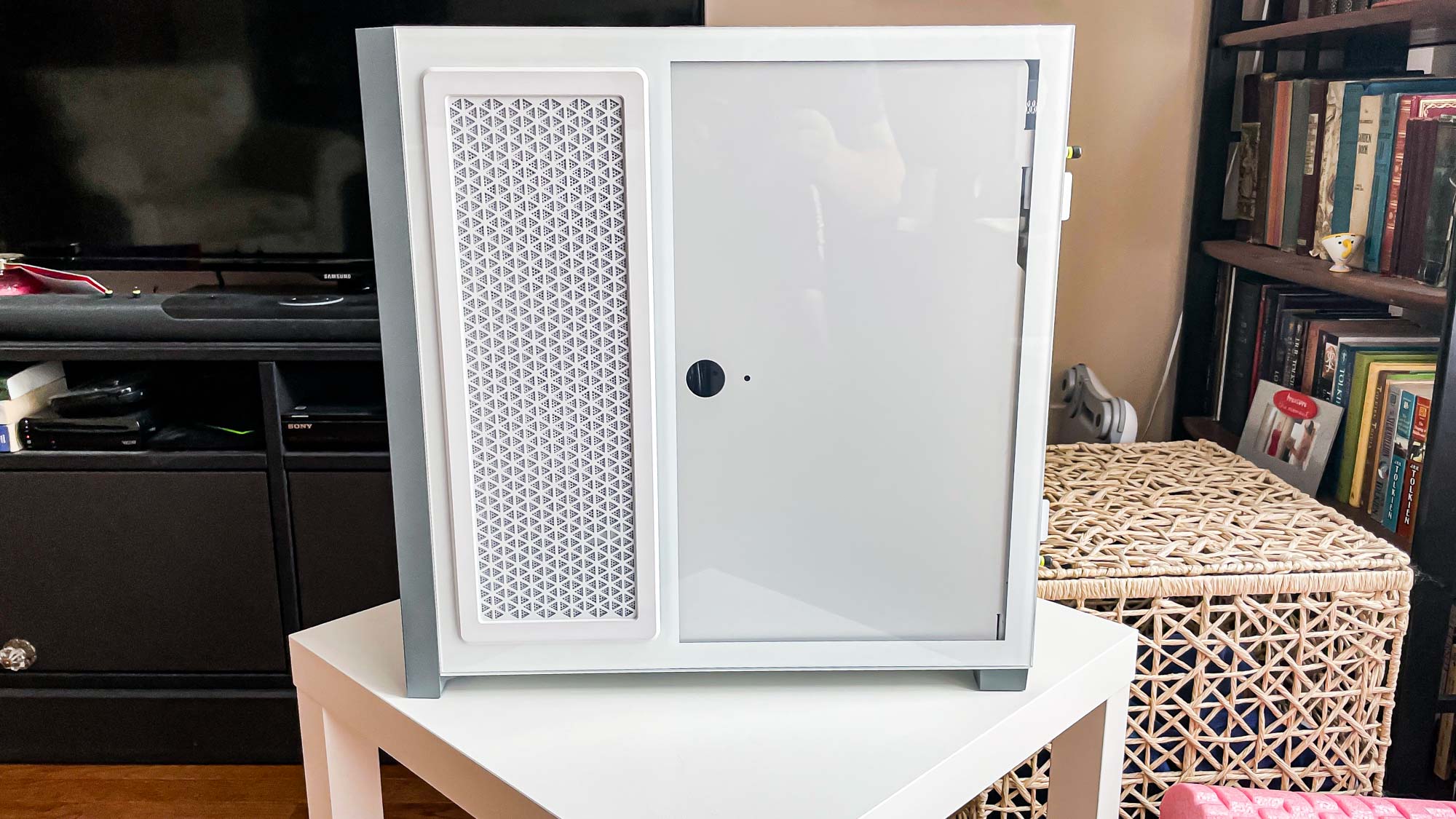
This case is all about the glass, with the sides, top and front all showing off the internal components and RGB. It’s far from subtle, and some gamers might find it downright garish. But as someone who loves RGB, I like the look of the Millennium. In fact, thanks to all of its lights and glass, the Millennium lights up my office at night with its glow.
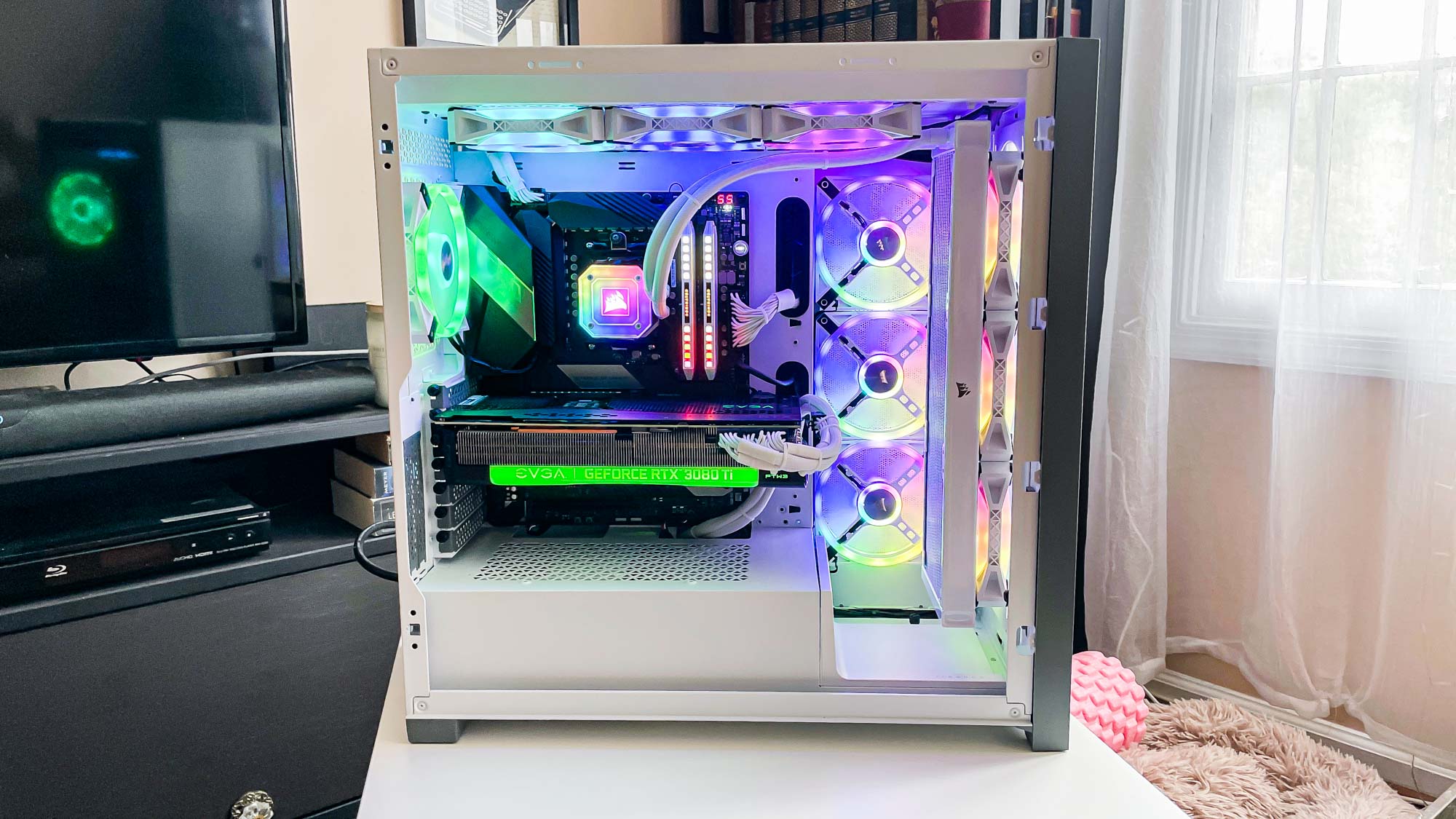
For a mid-tower case, the 5000X is quite large. But storage aficionados will like that it can hold two 3.5-inch drives and four 2.5-inch drives. It can also support up to a 360mm radiator for cooling.
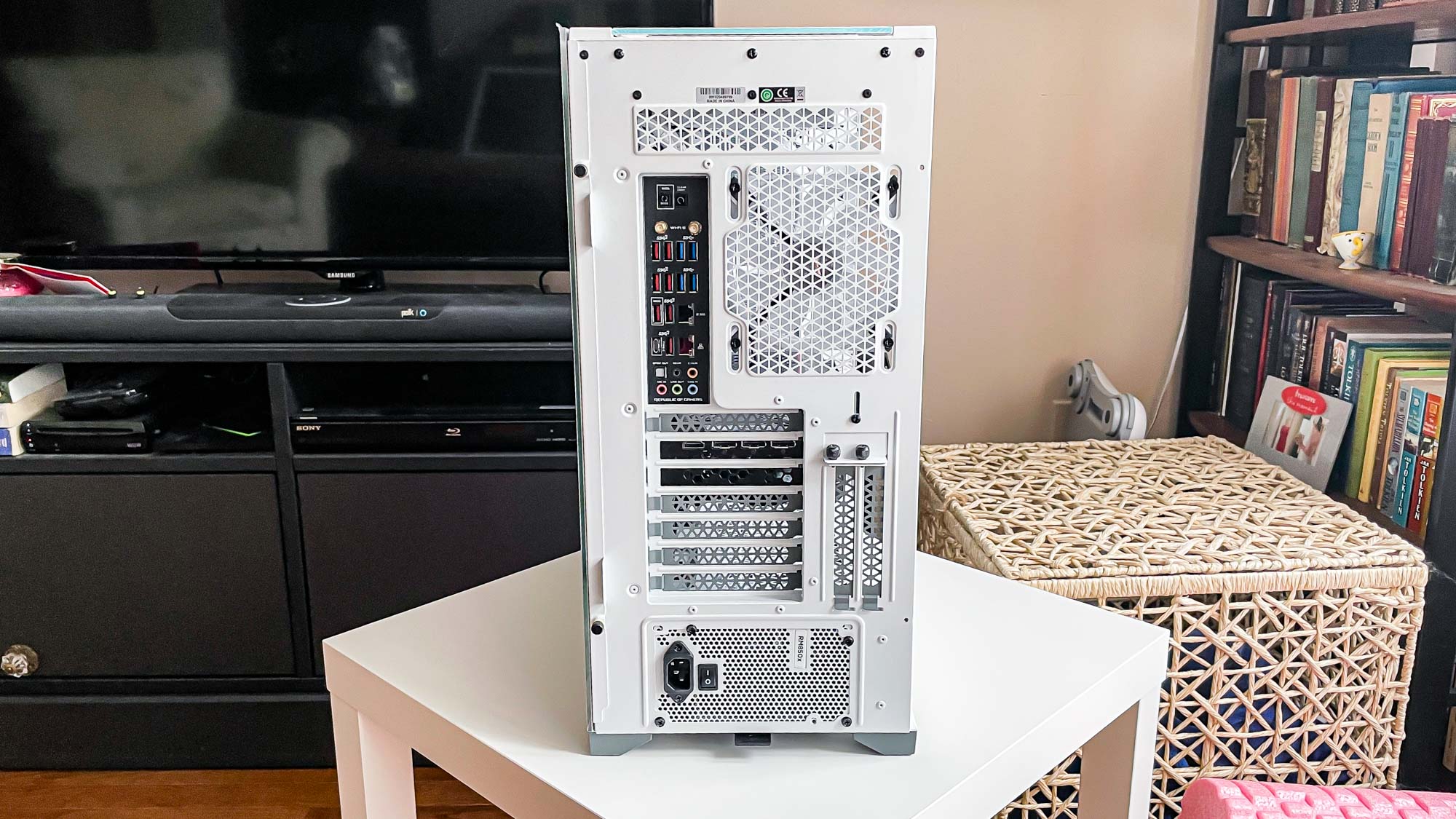
I proudly put the Millennium up on my desk so that I could bask in its rainbow glow.
Origin PC Millennium review: Ports and upgradeability
On its top, the Corsair 5000X case has a single USB 3.1 Type-C port, plus two USB 3.0 ports and audio in/out ports. And around the back, the Asus Crosshair VIII Hero motherboard provides a whole smorgasbord of ports. There are eight USB 3.2 Gen 2 (seven Type-A, one Type-C) and four USB 3.2 Gen 1 ports. There’s also a full sound suite, a pair of Ethernet ports (Realtek RTL8125-CG 2.5G and Intel I211-AT) and bolt-on points for the optional Wi-Fi antenna.
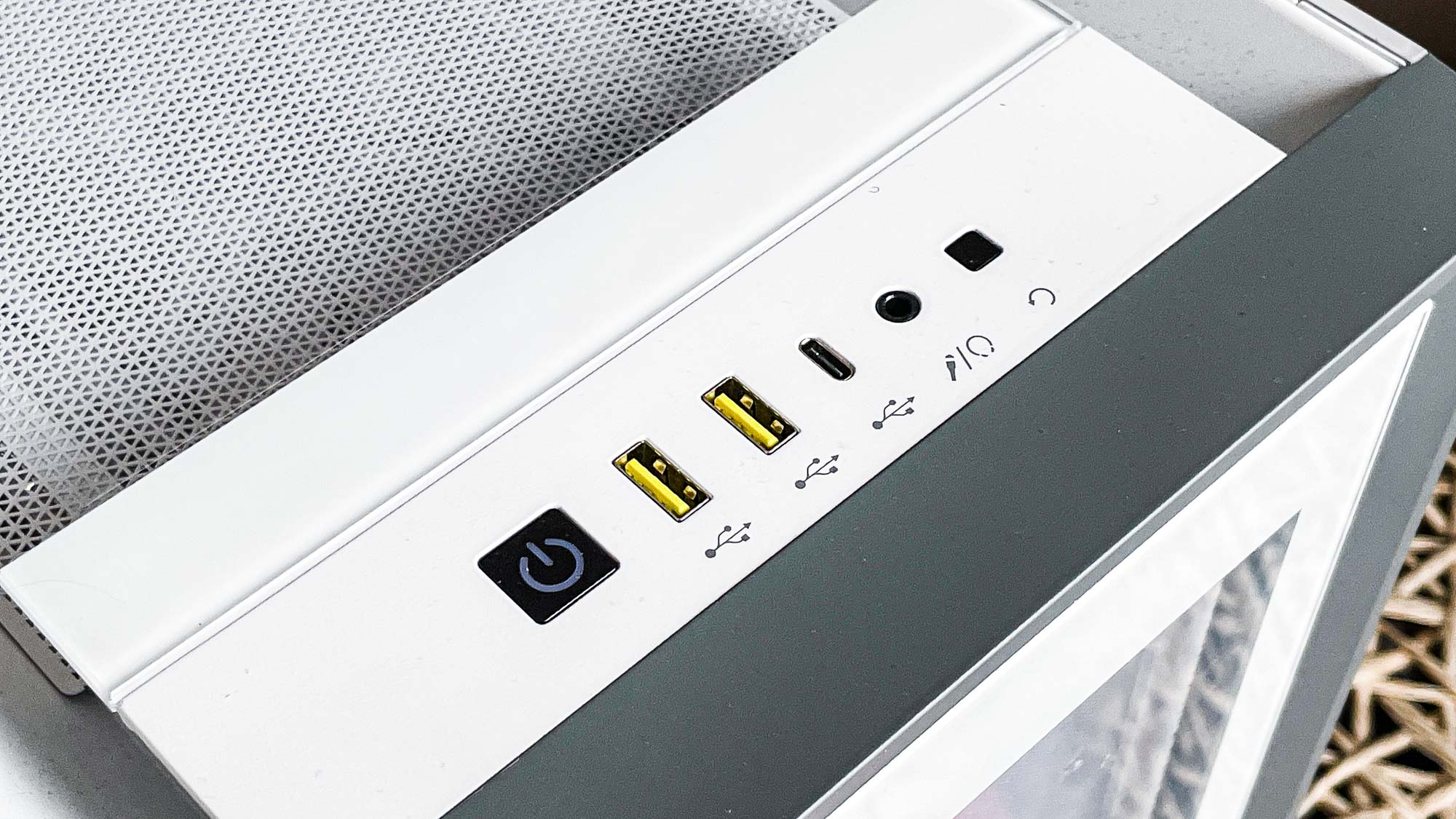
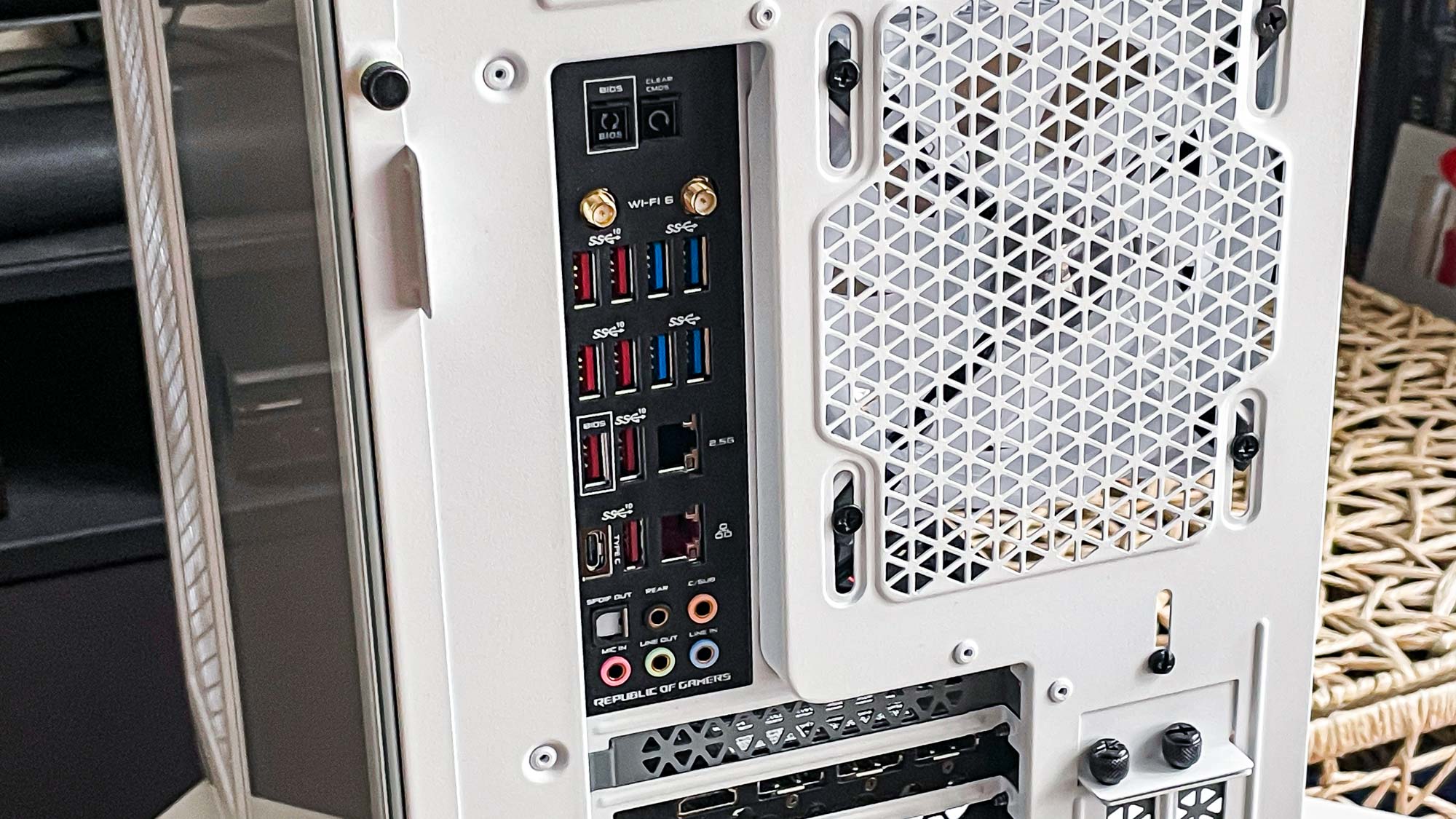
Since the Millennium is a custom system, there’s a ton of room for upgradeability. With this motherboard, for example, you can slot in more m.2 drives, swap out the GPU, add HDDs and SATA SSDs and go up to 128GB of RAM. Your expansion options will depend on which motherboard you get, so be sure to check out the manufacturer specs in advance.
Origin PC Millennium review: Performance
With a 3080 Ti and a Ryzen 9 5900X, our Millennium review unit can power through absolutely any game at a steady pace. The Millennium also features super-quiet cooling. Normally, I can hear my personal rig ramp up through my microphone (which easily picks up a lot of background noise), but that wasn’t the case with the Millennium. I suppose that's a result of having ten fans and a huge cooler on the GPU.
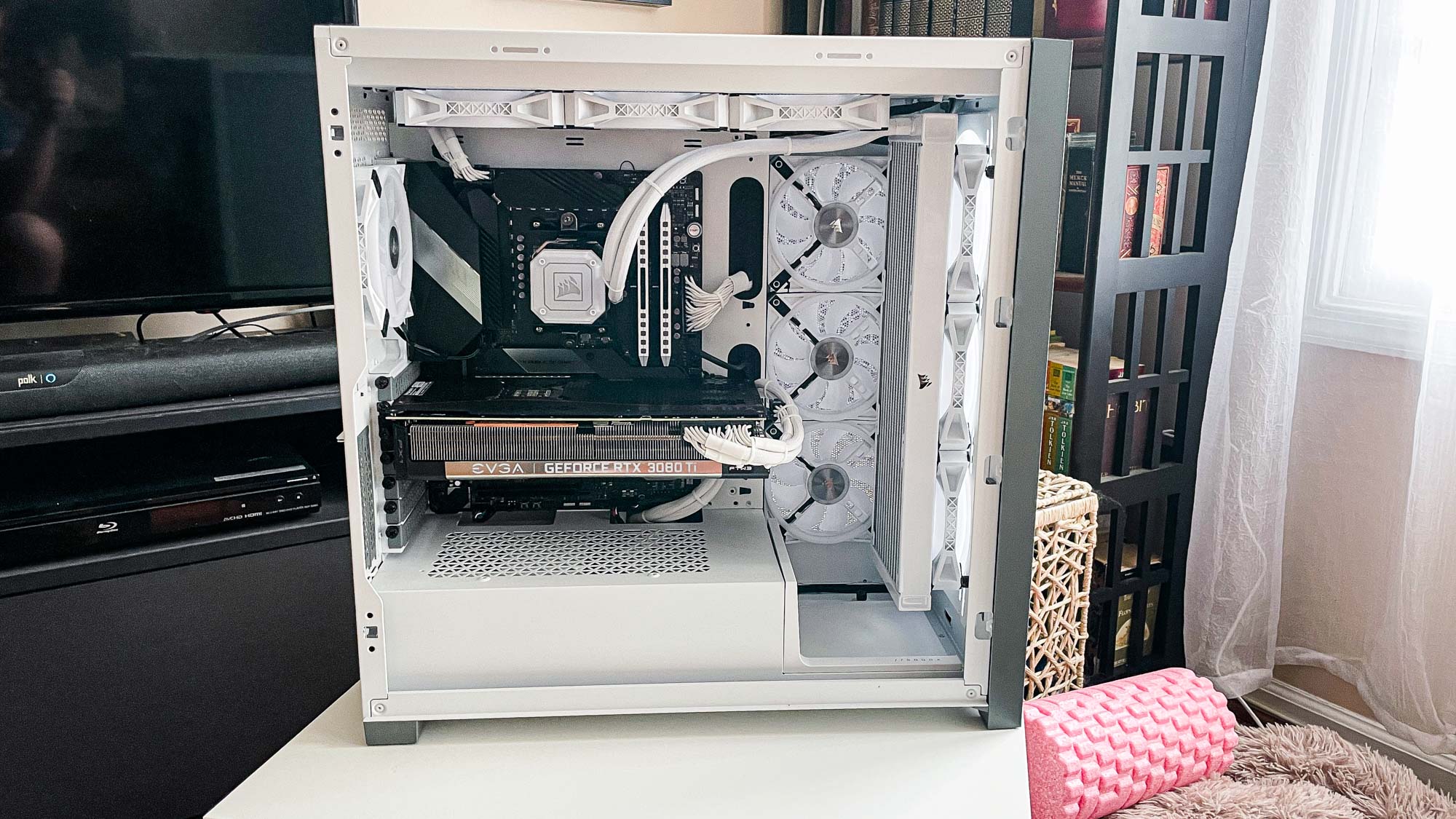
I pushed this system as hard as I possibly could. I used a 1440p monitor and regularly saw well over 60 frames per second in almost every title I typically play. Cyberpunk 2077 looked amazing with its neon cityscapes and moody ray tracing (75 fps average); Red Dead Redemption 2 bordered on photorealism (60-70 fps average); Metro Exodus in its new Enhanced mode crushed my spirit with its somber and gloomy post-apocalyptic visuals (50-60 fps average); and Control simply looked incredible (60-70 fps average).
The benchmarks we ran backed up my experience. We ran this machine through a suite of games at 1080p and 4K. However, playing games on this system at 1080p seems like massive overkill. It’s worth investing in a good 1440p or 4K gaming monitor to get the most out of what the GPU has to offer. Since this is the first 3080 Ti system we’ve reviewed, the closest comparison I could draw was with the RTX 3080-equipped HP Omen 30L.
| Row 0 - Cell 0 | Origin Millennium | HP Omen 30L |
| Assassin’s Creed Valhalla (Ultra) | 94 / 57 | 81 / 51 |
| Red Dead Redemption 2 (Medium) | 117 / 49 | 103 / 43 |
| Metro Exodus (Original, RTX) | 119 / 75 | 101 / 45 |
| Metro Exodus Enhanced Edition (Extreme) | 80 / 37 | Not tested |
| Grand Theft Auto V (Ultra) | 175 / 67 | 150 / 54 |
| Shadow of the Tomb Raider (Ultra) | 170 / 67 | 143 / 56 |
| Port Royal (ray tracing benchmark) | 13,130 | 11,044 |
With a Ryzen 9 5900X and 32GB of 3200Mhz RAM, the Millennium that I reviewed flies through everything I could throw at it. Outside of gaming, this is still a 12-core, 24-thread monster, but there are few people who need this kind of power. If you’re a content creator or 3D modeler, this configuration (or something similar) would be great for you. For the average PC gamer, however, this might be overkill.
I’m neither a content creator nor a 3D modeler, but one application that has given my personal computers significant pause in the past is Terragen 4. This is a terrain generation program that uses a lot of resources. In fact, even the work pre-rendering has always ramped up my CPU fans and slowed other programs to a crawl. I use the free version, and am thus limited to 720p outputs. But even those can take a very long time (especially with volumetric clouds).
When I tried rendering a Terragen 4 project on the Millennium, I was blown away by the sheer speed of the rendering process. Not only does this PC have 50% more cores/threads than my personal rig, but the 5900X is three generations newer than my Ryzen 7 1700X. I expected a steep increase in performance, but I was nonetheless impressed. I don’t make a living with this kind of work, but if I did, I would definitely be looking for horsepower like the Millennium offers.
We ran more than just gaming benchmarks, the results of which you can see below. I compared the Millennium to the HP Omen 30L again, which has an i9-10900K.
| Row 0 - Cell 0 | Origin Millennium | HP Omen 30L |
| Geekbench 5.4 | 14,041 | 11,258 |
| Handbrake (Mins:Secs) | 4:11 | 5:08 |
| 25GB file copy (Speed / transfer rate) | 28.2 s / 953 MB/s | 23 s / 1,166 MB/s |
This piece isn’t a 3080 vs. 3080 Ti debate, but it’s worth keeping in mind when you’re shopping around, or configuring your own Origin PC Millennium. You should note that there’s a $713 difference between a configuration with a 3080 versus one with a 3080 Ti.
And as with the GPUs, an Intel vs. Ryzen debate is outside the scope of this review. However, in the context of the Millennium, you save $29 by opting for the Ryzen 9 5900X over the Intel i9-10900K.
A hardware issue I noticed during my use was that my second HDMI monitor would fail to come on when I turned on the PC. I would have to actually unplug and plug the HDMI cable back in to get a signal to my monitor. This would also happen when waking the PC from sleep mode. I’m not sure if this is a problem with the 3080 Ti or what, because this is the first time I’ve ever encountered the problem on any machine.
Origin PC Millennium review: Software
The Millennium comes with minimal software installed, though it’s not a barebones Windows installation. I had Corsair iCUE, Asus Aura, EVGA Precision X1, Asus Sonic Suite and Nvidia GeForce Experience. What your machine has will ultimately depend on the motherboard and GPU models.
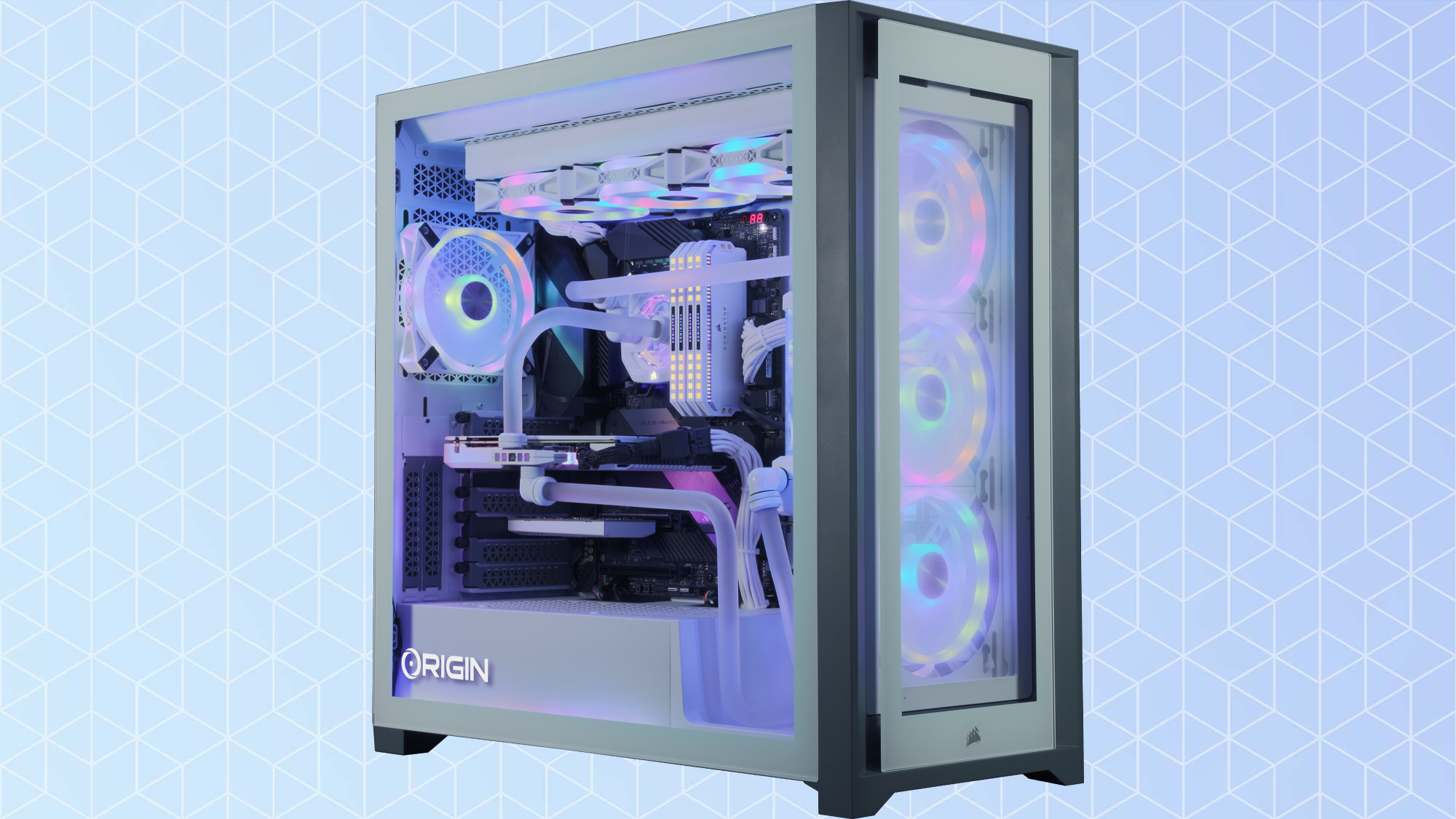
Some of these programs are helpful for driver management, while others handle overclocking and RGB lighting. From my perspective, none is invasive, but I did have trouble with the Aura software. It would often try to launch, but ultimately fail.
I’ve heard complaints about Corsair iCUE before, but I didn’t find it offensive. It’s certainly feature-rich and didn't impact my experience in any way. EVGA’s Precision X1 software is pretty good for managing the 3080 Ti, but I prefer MSI Afterburner for my personal needs. However, for the purposes of this review, Precision X1 is more than fine for overclocking and GPU tuning.
Otherwise, there’s not too much Microsoft bloat preinstalled. This is an improvement over the ISO you can get directly from Microsoft. You can remove some of the apps at your leisure, and you can disable the Windows 10 telemetry if you so wish.
Origin PC Millennium review: Verdict
The Origin PC Millennium is a powerful PC, even at its base level configuration. For $2,301, you can get a Ryzen 5 5600X, a GeForce RTX 3060 Ti, 16GB of Corsair Vengeance RAM (3200Mhz), a 120mm all-in-one CPU cooler and a 240GB OS drive. Even though that’s still a good PC, that’s a lot of money for a mid-range model.
Yes, the Millennium is expensive and yes, it uses Corsair parts (which can be hit or miss, depending on your luck). Origin PC doesn’t include a mouse or keyboard, meaning you still have to spring for peripherals if you’re just starting out with PC gaming. But for the money, you get a well-constructed gaming rig.
Building your own PC is hard lately. Even last-gen graphics cards command a hefty price on the used market, and scalpers are still taking advantage of the shortage of new RTX and Radeon cards. You might get lucky with a restock or a good used deal, but the vast majority of people won’t be so fortunate.
That leaves the pre-built market. You’ll pay a premium for the parts and construction, but it’s the only surefire way to get exactly what you want in your next rig. The Millennium is an excellent option, assuming it fits your budget.

Jordan is the Phones Editor for Tom's Guide, covering all things phone-related. He's written about phones for over six years and plans to continue for a long while to come. He loves nothing more than relaxing in his home with a book, game, or his latest personal writing project. Jordan likes finding new things to dive into, from books and games to new mechanical keyboard switches and fun keycap sets. Outside of work, you can find him poring over open-source software and his studies.
